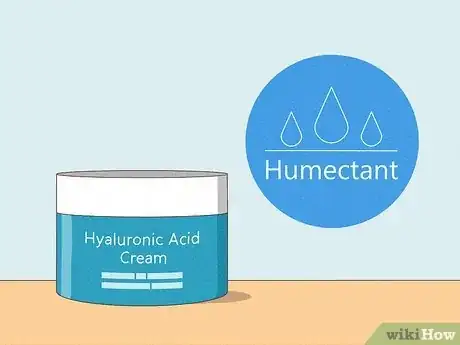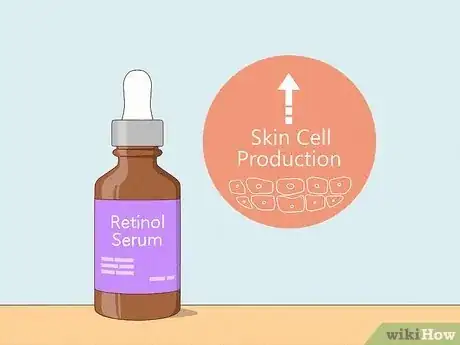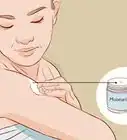This article was co-authored by Alicia Ramos. Alicia Ramos is a licensed aesthetician and the owner of Smoothe Denver in Denver, Colorado. She received her license at the School of Botanical & Medical Aesthetics, with training in lashes, dermaplaning, waxing, microdermabrasion, and chemical peels, and now provides skin care solutions to hundreds of clients.
There are 12 references cited in this article, which can be found at the bottom of the page.
In the skincare industry, people always rave about hyaluronic acid and retinol. Both ingredients are known to improve the overall appearance of your skin, but what happens if you use them together? In this article, we’re going over whether you can combine retinol and hyaluronic acid in the same routine (including their benefits and potential side effects). So, if you’re ready for smooth and glowing skin, read on—you might just discover your holy grail skincare products.
Things You Should Know
- Use hyaluronic acid and retinol together to improve the overall texture of your skin. Retinol increases cell turnover but can be irritating, and hyaluronic acid soothes and hydrates.
- To incorporate both ingredients into your skincare routine, cleanse your face, apply a thin layer of retinol, and then finish off with a hyaluronic acid cream or moisturizer.
- Retinol can increase your risk for sunburn, so only apply it at night, and be sure to wear sunscreen during the day.
Steps
How to Use Hyaluronic Acid & Retinol Together
-
1Cleanse your face. To remove any impurities and oils from your face, wet your face with lukewarm water and apply a water-based cleanser over your face and neck. Gently massage the cleanser into your skin using circular motions, and then rinse and pat dry.[2]
- Look for cleansers that say “gentle” or “moisturizing” on the label—harsh products can increase retinol irritation.[3]
- If you’re wearing heavy makeup or sunscreen, double cleanse with a cleansing balm before applying your water-based cleanser. This removes any traces of grime to help your retinol and hyaluronic acid penetrate your skin better.[4]
- To avoid pulling or dragging your skin, remember to pat your face dry (instead of rubbing).[5]
-
2Apply a thin layer of retinol. After your skin is completely dry, use a pea-sized amount of retinol serum, gel, or cream over your entire face, avoiding your eyes, lips, and mouth.[6]
-
3Finish off with your hyaluronic acid. Once your retinol is dry to the touch, apply a nickel-sized amount of hyaluronic acid cream or moisturizer over your face and neck.[9]
- Choose a moisturizer that says “non-comedogenic” so it doesn’t clog your pores.[10]
Layer your skincare products from thinnest to thickest. For example, if you’re using a hyaluronic acid serum, which is thin, apply it before a thicker retinol cream so it can absorb properly.
Warnings
References
- ↑ https://my.clevelandclinic.org/health/treatments/23293-retinol
- ↑ https://www.aad.org/public/everyday-care/skin-care-secrets/routine/healthier-looking-skin
- ↑ https://www.aad.org/public/everyday-care/skin-care-basics/care/winter-skin-survival-kit
- ↑ https://health.clevelandclinic.org/double-cleansing-explained
- ↑ https://www.aad.org/public/diseases/acne/skin-care/habits-stop
- ↑ https://my.clevelandclinic.org/health/treatments/23293-retinol
- ↑ https://my.clevelandclinic.org/health/treatments/23293-retinol
- ↑ https://my.clevelandclinic.org/health/treatments/23293-retinol
- ↑ https://youtu.be/-MoJr_ZrJN8?t=437
- ↑ https://my.clevelandclinic.org/health/treatments/23293-retinol
- ↑ https://www.health.harvard.edu/blog/the-hype-on-hyaluronic-acid-2020012318653
- ↑ https://my.clevelandclinic.org/health/articles/22915-hyaluronic-acid
- ↑ https://youtu.be/ezC5OnGuG54?t=99
- ↑ https://my.clevelandclinic.org/health/treatments/23293-retinol
- ↑ https://youtu.be/ezC5OnGuG54?t=514
- ↑ https://www.youtube.com/watch?v=grxmyM7EuDk&t=497s
- ↑ https://youtu.be/grxmyM7EuDk?t=724
- ↑ https://my.clevelandclinic.org/health/treatments/23293-retinol
- ↑ https://my.clevelandclinic.org/health/treatments/23293-retinol












-Step-12-Version-3.webp)



















































